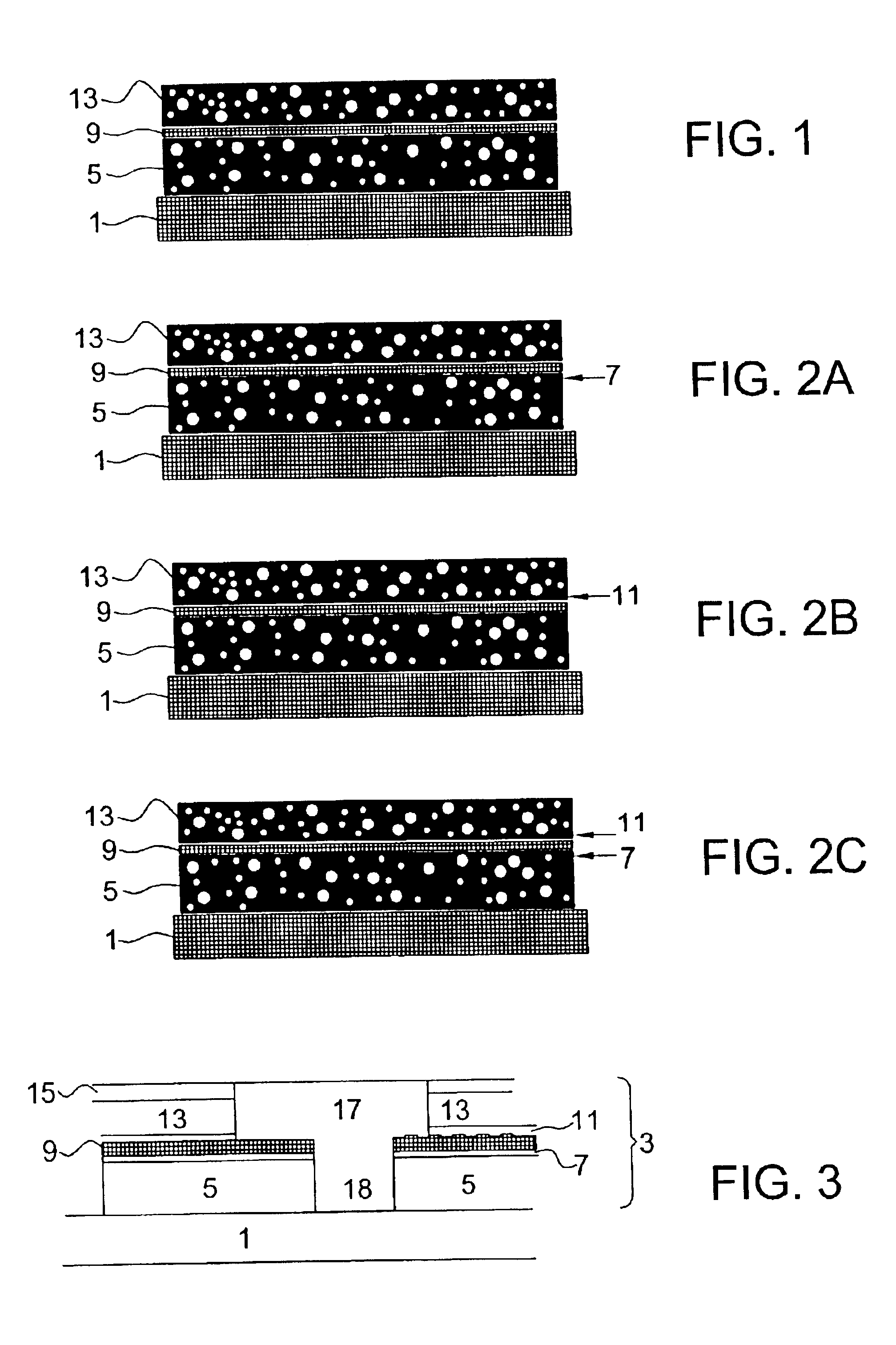Toughness, adhesion and smooth metal lines of porous low k dielectric interconnect structures
a low k dielectric and interconnecting technology, applied in the field of interconnecting structures, can solve the problems of poor adhesion, inability to use as the matrix of porous dielectrics, and delamination of metal lines
- Summary
- Abstract
- Description
- Claims
- Application Information
AI Technical Summary
Benefits of technology
Problems solved by technology
Method used
Image
Examples
Embodiment Construction
Substrate / Porous SiLK.TM. / thin SiLK.TM. layer / HOSP BESt.TM. / thin SiLK.TM. layer / Porous SiLK.TM.
FIG. 3 schematically illustrates a specific embodiment of the invention. A substrate 1 may contain transistors and an array of conductor elements. An interconnect structure 3, in accordance with the invention, is disposed on the substrate 1. Structure 3 is comprised of a first porous SiLK.TM. dielectric layer 5, having a thickness of 600-5000 Angstroms and having a highly aromatic structure which is thermally stable to approximately 425.degree. C., with a glass transition temperature above approximately 450.degree. C., and a low dielectric constant of approximately 2.2.
A thin non porous SiLK.TM. layer 7, having a fracture toughness greater than 0.30 MPa-m.sup.1 / 2 and having a thickness of approximately 25-150 Angstroms, is disposed on the first porous SiLK layer 5. As noted above, layer 7 has increased fracture toughness compared to porous SiLK due to a decreased network density. This stru...
PUM
| Property | Measurement | Unit |
|---|---|---|
| thickness | aaaaa | aaaaa |
| thickness | aaaaa | aaaaa |
| thickness | aaaaa | aaaaa |
Abstract
Description
Claims
Application Information
 Login to View More
Login to View More - R&D
- Intellectual Property
- Life Sciences
- Materials
- Tech Scout
- Unparalleled Data Quality
- Higher Quality Content
- 60% Fewer Hallucinations
Browse by: Latest US Patents, China's latest patents, Technical Efficacy Thesaurus, Application Domain, Technology Topic, Popular Technical Reports.
© 2025 PatSnap. All rights reserved.Legal|Privacy policy|Modern Slavery Act Transparency Statement|Sitemap|About US| Contact US: help@patsnap.com

